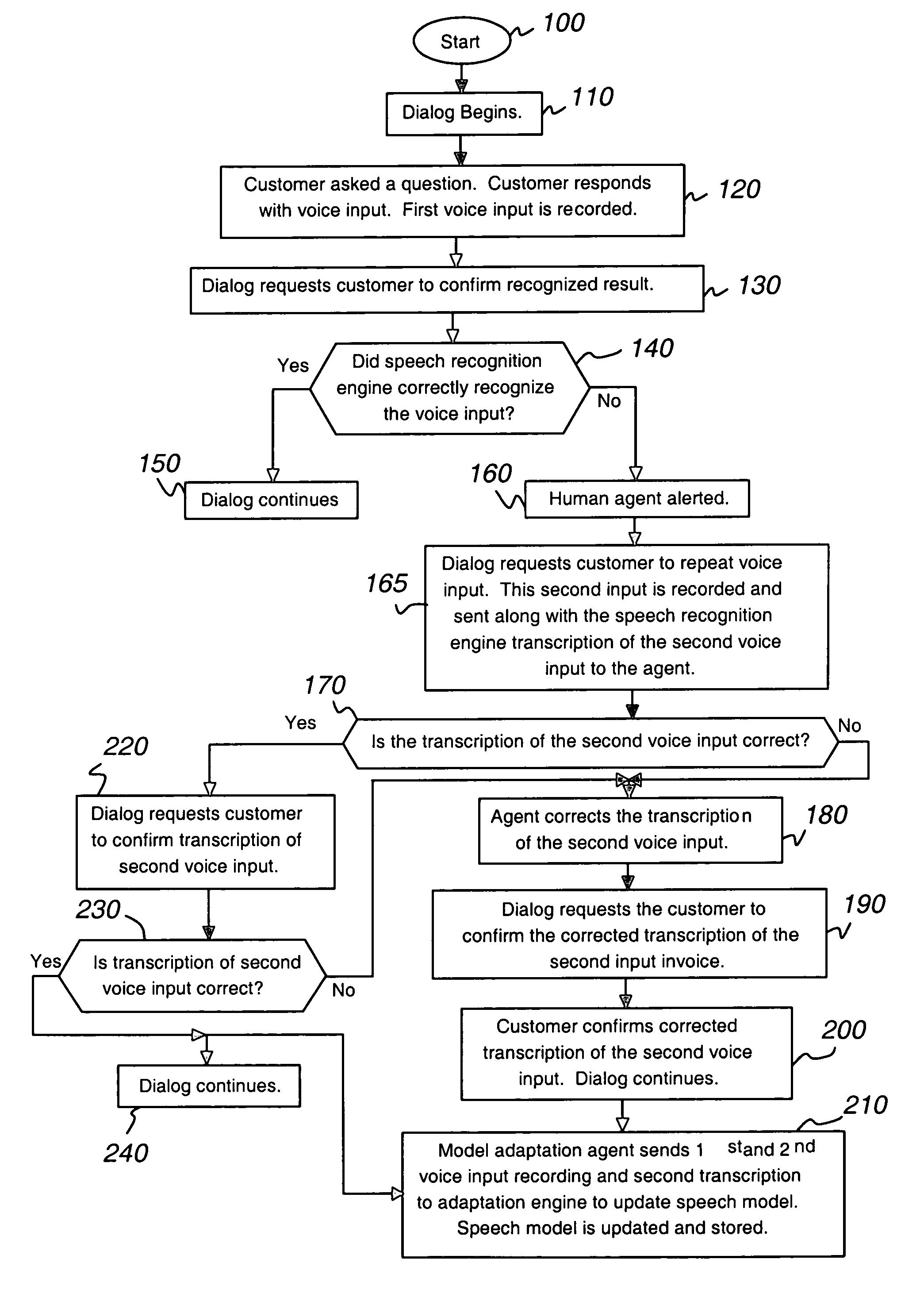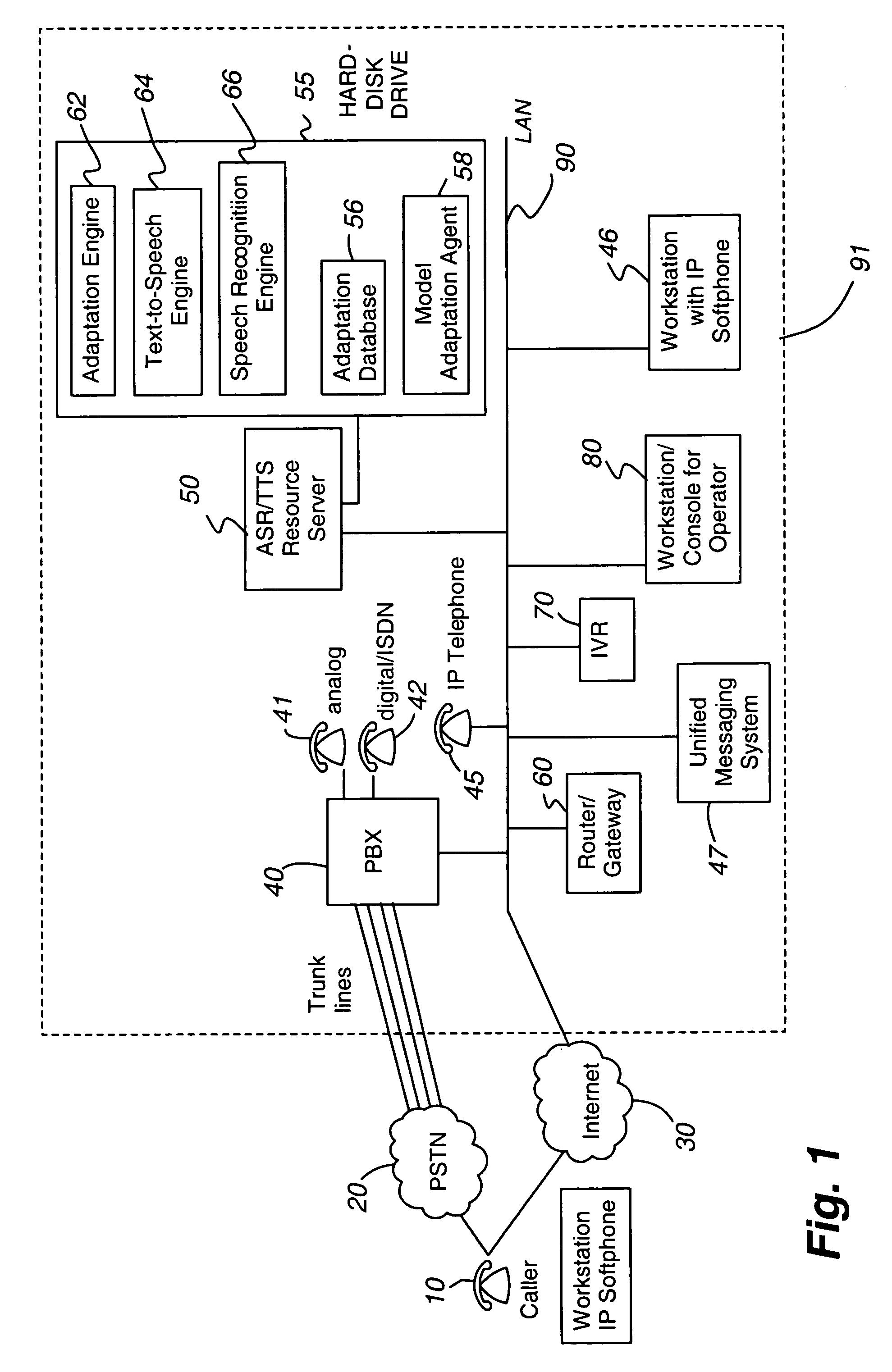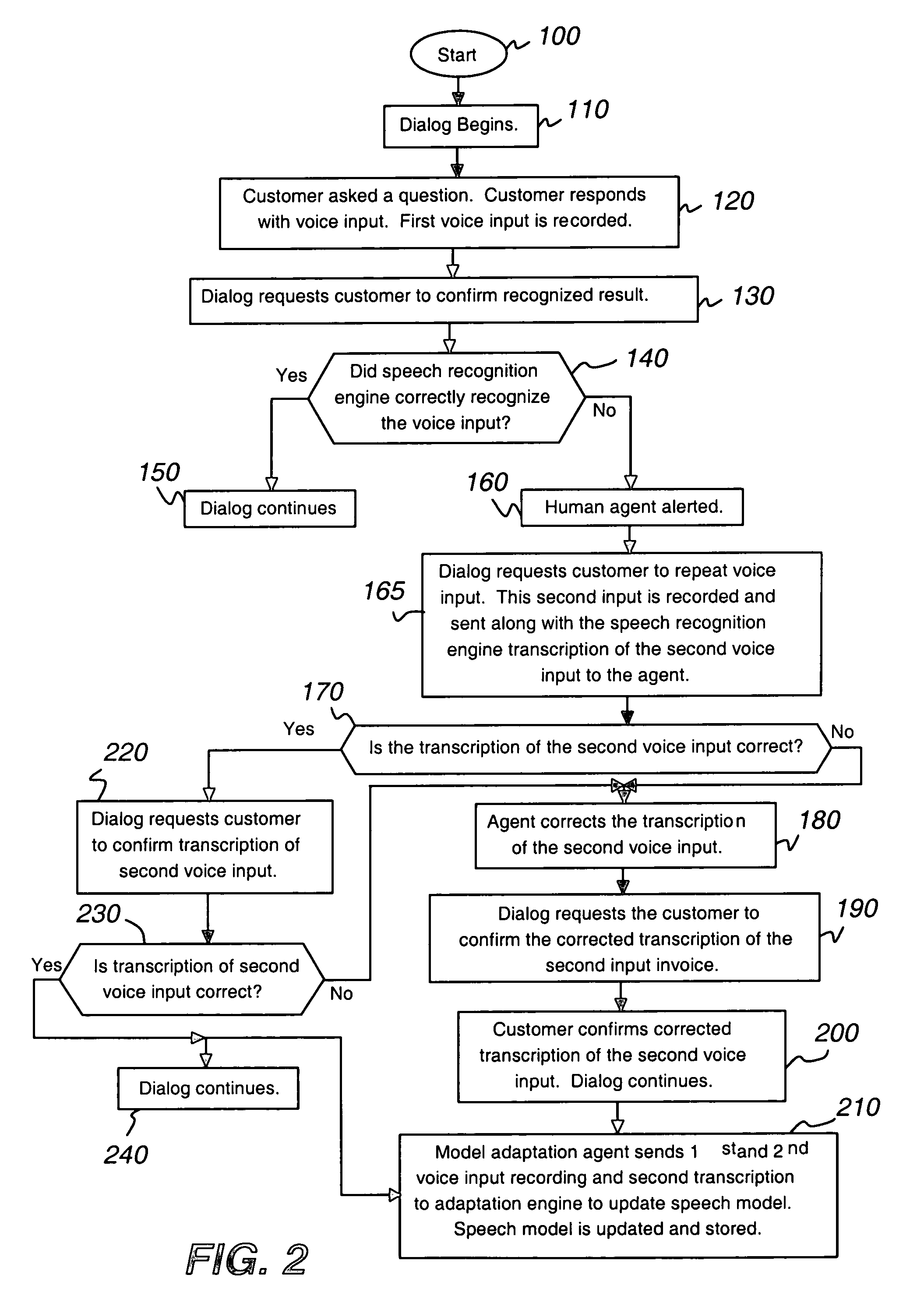Transparent monitoring and intervention to improve automatic adaptation of speech models
a speech model and automatic adaptation technology, applied in the field of speech recognition system, can solve the problems of poor performance, inability to recognize the proper names of technical terms and proper names that have not entered the common jargon, and may not be able to correctly transcribe the verbal response of all speakers, so as to improve one or more speech models, improve the accuracy of the speech recognition system, and quick retrain
- Summary
- Abstract
- Description
- Claims
- Application Information
AI Technical Summary
Benefits of technology
Problems solved by technology
Method used
Image
Examples
Embodiment Construction
[0035]FIG. 1 is a block diagram of a system utilizing the automatic speech recognition (ASR) 50 of the present invention. System 91 includes telecommunications equipment found in an enterprise, such as a bank, small or large corporation, university, government facility etc. When customer 10 dials an enterprise but does not know the direct telephone number of the individual he wants to speak to, customer 10 may place a telephone call via the public switched telephone network (PSTN) 20 to the enterprise's main telephone number. Similarly, customer 10 may use IP softphone application on his personal computer 11 to allow his PC to function as a desktop IP phone or use a desktop IP telephone 10 to place a telephone call using the Internet 30. The enterprise most likely will have an interactive voice response (IVR) 70 system present a variety of menu options to the customer 10. If the customer's 10 telephone does not have touch-tone (dual tone multi-frequency “DTMF”) capability, the custo...
PUM
 Login to View More
Login to View More Abstract
Description
Claims
Application Information
 Login to View More
Login to View More - R&D
- Intellectual Property
- Life Sciences
- Materials
- Tech Scout
- Unparalleled Data Quality
- Higher Quality Content
- 60% Fewer Hallucinations
Browse by: Latest US Patents, China's latest patents, Technical Efficacy Thesaurus, Application Domain, Technology Topic, Popular Technical Reports.
© 2025 PatSnap. All rights reserved.Legal|Privacy policy|Modern Slavery Act Transparency Statement|Sitemap|About US| Contact US: help@patsnap.com



